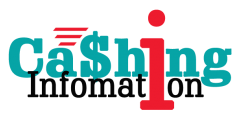If you’re a restaurant owner, you know that a point-of-sale (POS) system is like the backbone of your business. It helps you keep track of orders, inventory, and sales, and makes sure everything runs smoothly. But here’s the million-dollar question: how much should you really be spending on a POS system?
It’s a tough call, but we’re here to help. Let’s go over the different factors that can impact the cost of a POS system and help you figure out the right budget for your restaurant.
Factors that Impact the Cost of a POS System
1. Hardware
The first factor that can impact the cost of a Pos restaurant system is the hardware. The hardware includes the terminal, printer, cash drawer, and any other devices that are needed to process transactions.
The cost of the hardware can vary depending on the quality and features of the devices. For example, a basic terminal may cost around $200, while a more advanced terminal with a touch screen and built-in card reader can cost upwards of $1,000.
2. Software
The software is another factor that can impact the cost of a POS system. The software is the brain of the system, and it’s responsible for managing orders, inventory, and payments. The cost of the software can vary depending on the features and functionality that you need.
For example, a basic software package may cost around $50 per month, while a more advanced package with features like online ordering and loyalty programs can cost upwards of $200 per month.
3. Integration
Integration is another factor that can impact the cost of a POS system. Integration refers to the ability of the POS system to work with other systems that you may be using in your restaurant, such as inventory management or accounting software. The cost of integration can vary depending on the complexity of the systems that need to be integrated.
For example, integrating a basic inventory management system may cost around $500, while integrating a more complex accounting system can cost upwards of $2,000.
4. Support
Support is another factor that can impact the cost of a POS system. Support refers to the assistance that you receive from the Pos restaurant provider when you have questions or issues with the system. The cost of support can vary depending on the level of support that you need. For example, basic support may be included in the cost of the software, while more advanced support like 24/7 phone support can cost upwards of $100 per month.
Determining How Much You Should Spend on a POS System
Now that we’ve explored the factors that can impact the cost of a POS system, let’s talk about how to determine how much you should really be spending.
- Consider Your Budget
The first step in determining how much you should spend on a POS system is to consider your budget. You should have a clear understanding of how much you can afford to spend on a system without compromising your business’s financial stability. Keep in mind that a POS system is an investment that can help you save money in the long run, so it’s important to consider the long-term benefits when setting your budget.
2. Evaluate Your Needs
The next step is to evaluate your needs. What features and functionality do you need in a POS system? Do you need a basic system that can process transactions and manage inventory, or do you need a more advanced system with features like online ordering and loyalty programs? Make a list of your must-haves and nice-to-haves, and use that list to narrow down your options.
3. Research Your Options
Once you have a clear understanding of your budget and needs, it’s time to research your options. Look for POS providers that offer systems that meet your needs and fit within your budget. Don’t be afraid to ask for demos or trial periods so that you can test out the system before making a commitment.
4. Consider the Total Cost of Ownership
When evaluating your options, it’s important to consider the total cost of ownership. This includes not only the upfront cost of the system but also the ongoing costs like software updates, maintenance, and support. Make sure you have a clear understanding of all of the costs associated with the system before making a decision.
5. Factor in Future Growth
Finally, it’s important to factor in future growth when determining how much you should spend on a POS system. You want to choose a system that can grow with your business and accommodate your future needs. Make sure you choose a system that is scalable and can easily be upgraded as your business expands.
Final Thoughts
In the end, it all comes down to finding the right balance between your needs and your budget. You don’t want to overspend on a system that has features you’ll never use, but you also don’t want to skimp on a system that won’t meet your needs.
Take the time to evaluate your options, consider the total cost of ownership, and factor in future growth, and you’ll be well on your way to choosing a POS system that will help your restaurant thrive. And remember, a little bit of investment in the right POS system can go a long way in making your restaurant run smoother and keeping your customers happy.

